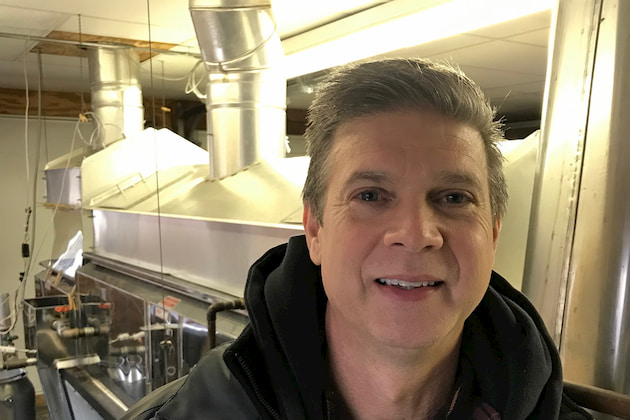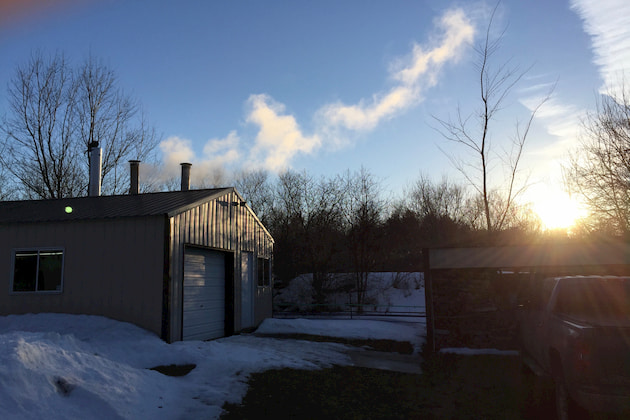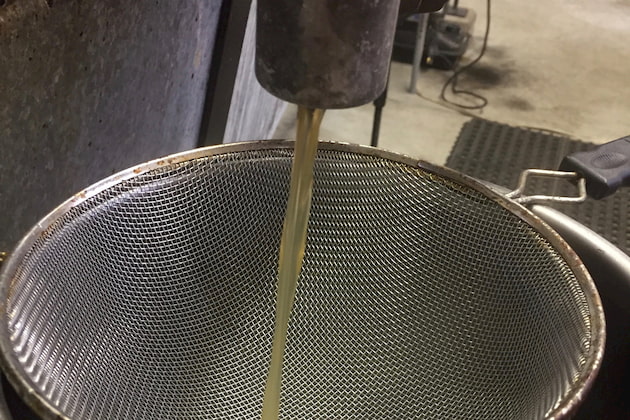Sugarmaker Profiles
Maple syrup making runs full circle for Michigan man
By STAN MADDUX | JANUARY 23, 2020
NILES, Mich.—Tom Cook was just 7 when hooked by the shiny evaporator pans boiling down sap into maple syrup.
He’s gone from tapping trees in his neighborhood and along roadsides as a kid to making syrup from his own 20 acre woods he planted himself.
Now 55, the southwest Michigan man said it’s a special feeling to venture out with his dog to harvest sap from trees he watched grow from seedlings the past 30-years.
“It’s always neat. You’re just thinking. God, I planted these things and you’re making syrup from them so it’s kind of cool,” he said.
The owner of Cook’s Sugar Bush in Niles doesn’t come from a family of maple syrup makers.
He caught the bug watching maple syrup being made on trips with his father and mother to festivals and state parks.
Cook said he started by tapping trees in the yards of childhood friends and others in the neighborhood then boiled down the sap on his mother’s kitchen stove.
He made only about a gallon of syrup in those days for consumption at home and pretty much gave it up when other interests drew his attention as a teenager.
Maple syrup was still in his veins, though, when he purchased an abandoned soybean field at age 22.
He planted about 10,000 trees ranging from hardwoods like oak and walnut to the much softer white pine.
His budding forest also included a lot of maple trees.
‘’I always wanted a woods,’’ he said.
Cook said he was 33 when the urge to make syrup again took firm hold his trees were still way too young for tapping.
He took his taps, gravity tubing and other sap collecting gear to 300 or so trees at various roadsides and land belonging to family and friends.
Cook also began selling the 125 to 150 gallons of syrup he made each season from the sap of those trees.
“That’s really how it happened,” he said.
Three years ago, things became a bit easier for Cook when his maple trees finally became mature enough to tap.
Now, he leaves the tubing system for collecting sap in his own trees instead having to remove and reinstall the equipment from trees elsewhere from year to year.
He’s also upgraded to a reverse osmosis machine that pulls two-thirds of the water out of the sap before it starts getting boiled down.
Another time saver has been switching to a diesel engine to power his evaporator instead of wood to speed up the boil down.
“It’s definitely work but there’s some fun to it. You kind of get addicted to it,” Cook said.
Cook offers his syrup at farmers markets, fairs and on the internet.
Some of his product is also taken by a distributor from South Bend, Ind. and sold retail. He also has customers knocking on his doorstep through word of mouth.
Cook said one minor drawback is the sap in his trees isn’t quite as sweet because of a slightly lower sugar content from his woods being more shaded.
Shade cuts down on photosynthesis, the process plants use to convert carbon dioxide and energy from the sun to make sugar molecules and oxygen. Roadside trees like the ones he used to tap don’t have to compete for sunlight.
“A lot of people call them 'sap cows.' They can just give you so much sap and volume of sap and that sugar content is so sweet that you can make some really good syrup from them,’’ he said.
The high quality of his syrup, though, is not lacking.
He just boils down more sap to achieve the desired 66.5-percent sugar content for syrup, he said.
Cook makes his living full-time in the burglar and fire alarm business. He’s also a former president of the Michigan Maple Syrup Association.
According to USDA, Michigan was the 6th leading producer of maple syrup in the nation from 2016-2018.



































